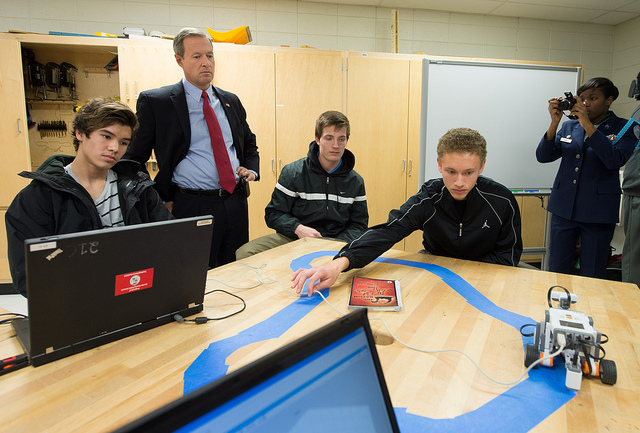The 5 Obstacles You Must Overcome As a Tech-Savvy Educator

As amazing an impact as technology can have on education, modern digital resources are unfortunately far from evenly available. Do you know what technological poverty can look like? Do you know what causes lie behind it? Below, we’ve listed the top five most common barriers to introducing technology to the classroom.
1. The Digital Divide
Earlier in this chapter, we looked at the digital divide and broke it down by race, class, and gender. The digital divide is considered one of the biggest barriers to introducing technology into the classroom. All students are expected to have computer skills, and often it is just assumed that they all do. Unfortunately, this is not the case: access to technology is still not equal. Students who have less access to technology are mostly those living in low-income homes. Even if these students have a technology-based education at school, with a computer and Internet access, they will still not have the same advantages as those who have computer access at home. Access to technology by itself, however, is not a guarantee of computer literacy and skills. It also depends on how the technology is used. Some schools use computers for drill-and-practice exercises, while others foster problem-solving activities, challenging students to develop deeper levels of understanding.
The digital divide has been closing recently, due to lower prices for computers, new mobile phone technology, and a growing number of schools that have computer equipment. But the digital divide in the differences in the quality of hardware, software, and connectivity resources doesn’t seem to be closing. More wealthy homes will always be ahead of homes living in poverty, and urban and suburban students will always have better and faster Internet connections than rural students, who sometimes don’t have an Internet connection at all.
2. Lack of Funds
Maintaining a network within a school with decent hardware and software requires a considerable amount of money, which many schools simply do not have. Information technology is expensive. State and local governments spend more than $5 billion annually to equip schools with computers, networks, hardware, and software. Apart from the cost of providing the school with the necessary equipment to maintain this, schools have to have a technology budget each year that includes hardware and software maintenance, in addition to the hiring of trained personnel to handle technical issues.
3. Lack of Training
To achieve a successful introduction of technology into the classroom, trained support personnel and training for teachers are essential. Teachers can’t be expected to use technologies that they’re not comfortable working with. Technical problems can discourage teachers from using the technology, so it’s important to have a technical support professional available at all times. This way, problems will be only minor inconveniences. Providing teachers with complete training on the technology they will be using, as well as the possible problems and how to solve them, is a valuable investment for education. Teachers who are comfortable with and understand these technologies are the most likely to effectively use these technologies in the classroom.
In response to the fact that teacher training on technology is “hit and miss” in American schools, many educational institutions are including technology training in their course work for obtaining an initial teacher license.
4. Internet Access
Access to cyberspace—the world of information provided through the Internet—is of huge benefit to students and teachers. Access creates opportunities for communicating with any part of the world, opportunities for online simulation applications, social networking, Web-based documents, and endless other sources of information. These are just some of the benefits that a school without Internet access misses out on. During the 1990s, President Bill Clinton created the National Information Infrastructure (NII), the goal of which was to encourage all schools, hospitals, and government agencies to become connected to the Internet. This program included an E-rate, or Education Rate, which were discounted rates for schools and libraries, based on the income levels of the students’ families and location of the school. Since NII was implemented, the number of public schools with Internet access has risen dramatically. By 2005, fifteen years after the NII was established, there was virtually no difference in access between poorer and wealthier schools.
5. Access to Technology
As mentioned, differential access to technology creates a digital divide. Schools are making big efforts to reduce this gap, and making it possible for all students have access to high-end technology in both poor and wealthy schools. Schools have been able to reduce the number of students per computer, but despite this, the digital divide concerning the difference in technology access at home has not changed as much. This gap between quality technology access in low-income homes and more affluent homes remains wide.
Does your classroom experience any of these issues? If so, have you taken any steps to try to overcome the obstacle? Talk to the other teachers in your school and to your administrators about how you can work together to remove the hurdles standing between your students and their chance at a maximized education.






